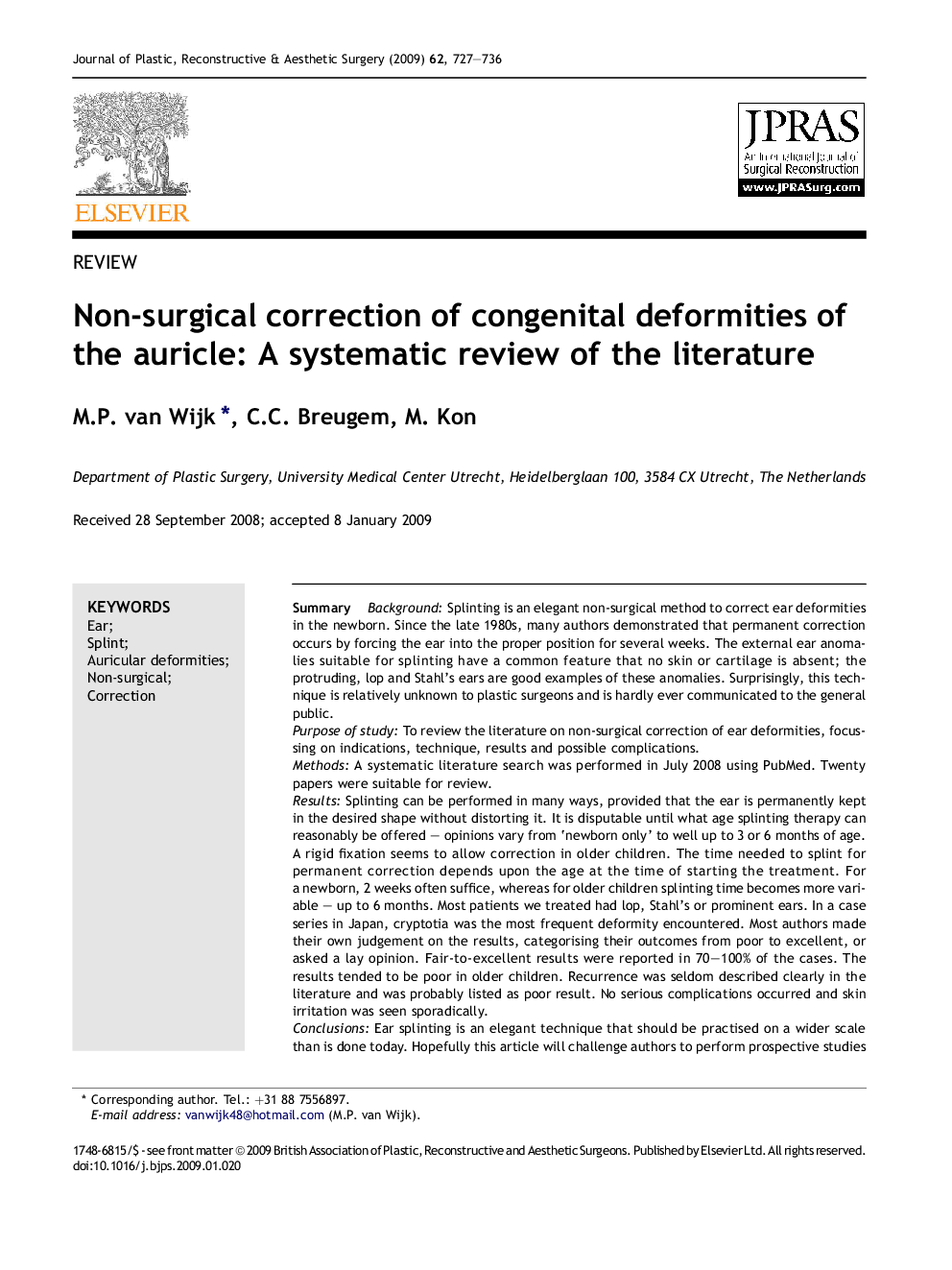| کد مقاله | کد نشریه | سال انتشار | مقاله انگلیسی | نسخه تمام متن |
|---|---|---|---|---|
| 4120061 | 1270366 | 2009 | 10 صفحه PDF | دانلود رایگان |

SummaryBackgroundSplinting is an elegant non-surgical method to correct ear deformities in the newborn. Since the late 1980s, many authors demonstrated that permanent correction occurs by forcing the ear into the proper position for several weeks. The external ear anomalies suitable for splinting have a common feature that no skin or cartilage is absent; the protruding, lop and Stahl's ears are good examples of these anomalies. Surprisingly, this technique is relatively unknown to plastic surgeons and is hardly ever communicated to the general public.Purpose of studyTo review the literature on non-surgical correction of ear deformities, focussing on indications, technique, results and possible complications.MethodsA systematic literature search was performed in July 2008 using PubMed. Twenty papers were suitable for review.ResultsSplinting can be performed in many ways, provided that the ear is permanently kept in the desired shape without distorting it. It is disputable until what age splinting therapy can reasonably be offered – opinions vary from ‘newborn only’ to well up to 3 or 6 months of age. A rigid fixation seems to allow correction in older children. The time needed to splint for permanent correction depends upon the age at the time of starting the treatment. For a newborn, 2 weeks often suffice, whereas for older children splinting time becomes more variable – up to 6 months. Most patients we treated had lop, Stahl's or prominent ears. In a case series in Japan, cryptotia was the most frequent deformity encountered. Most authors made their own judgement on the results, categorising their outcomes from poor to excellent, or asked a lay opinion. Fair-to-excellent results were reported in 70–100% of the cases. The results tended to be poor in older children. Recurrence was seldom described clearly in the literature and was probably listed as poor result. No serious complications occurred and skin irritation was seen sporadically.ConclusionsEar splinting is an elegant technique that should be practised on a wider scale than is done today. Hopefully this article will challenge authors to perform prospective studies specifically addressing the relation between patient age, degree of deformity, stiffness of the cartilage, the time needed to splint and the treatment outcome.
Journal: Journal of Plastic, Reconstructive & Aesthetic Surgery - Volume 62, Issue 6, June 2009, Pages 727–736